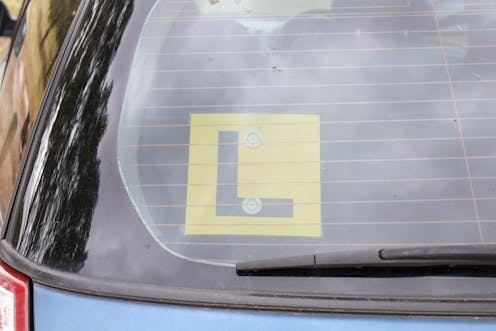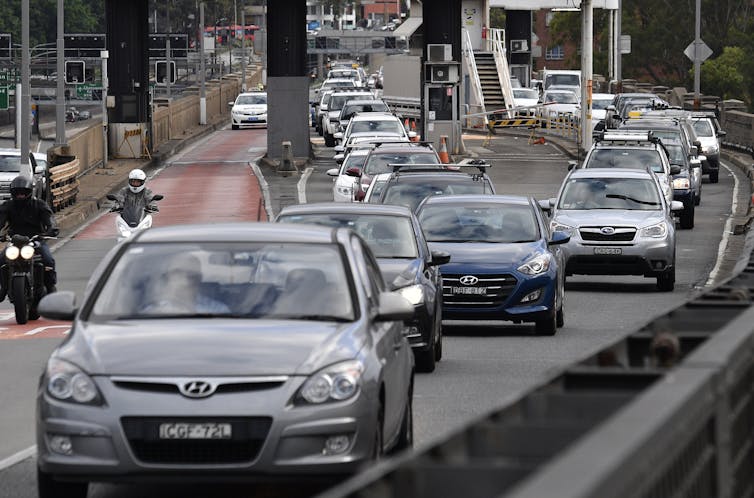Source: The Conversation (Au and NZ) – By Nathan Kettlewell, Chancellor’s Postdoctoral Research Fellow, Economics Discipline Group, University of Technology Sydney

During the Easter school holidays, scores of learner drivers will hit the roads, with parents carefully logging all their driving hours. Many of us have experienced this process, whether as a learner, a supervisor, or both.
The requirement is particularly high in New South Wales and Victoria, where learners must complete a minimum of 120 hours of supervised driving before they can drive without supervision. This one of the highest requirements for learner drivers in the world.
We set out to answer whether this supervised driving practice actually makes for safer drivers.
Our study evaluated the effect of two significant increases in the minimum supervised driving hours mandate in New South Wales: the 2000 reform from zero to 50 hours, and the 2007 reform from 50 to 120 hours.
Read more:
There’s little to gain and much to lose from lowering the minimum driving age
What we found
By comparing people who turned 16 – the minimum age to obtain a learner permit – just before the policy changed to people who turned 16 just after, we were able to isolate the effect of these policy changes on motor vehicle accidents, while abstracting from other factors that might affect accidents.
Our dataset contained all licensing and crash records in New South Wales over the reform periods. The crash data include all serious crashes – those that led to a hospitalisation and/or a vehicle being towed.
Consider people born in July 1991, or later. They were subject to the 120-hour mandate. But those born slightly earlier were subject to the 50-hour mandate if they obtained their learners’ permit relatively quickly.
If the policy was effective, we would expect to see a sharp drop in crash rates for people who turned 16 after the 120-hour rule came in. But we discovered there was no such drop.
We analysed the data in several ways, all of which suggested no effect of the 2007 reform on crash rates. Because of our large sample size, we were confidently able to rule out any meaningful effects. We did observe a small delay in the average age of obtaining a provisional (P1) license of around one month.
In contrast, the first policy change was effective. We found that increasing supervision from zero to 50 hours reduced the probability of a motor vehicle accident in the first year of unsupervised driving from 6.9 to 5.4 percentage points, a reduction of 21%. However, there was no reduction in the probability of an accident beyond this 12-month window, suggesting the extra experience is helpful initially, but does not change long-term driving habits.
Since young males are at higher risk of crashing than females, we thought there might be differences by sex. In fact, the results were very similar for males and females.
It is important to note that we evaluated the policy mandate, but we cannot guarantee compliance with it. In practice, people may do more hours than required, or may over-report their hours, risking penalties if caught. Widespread non-compliance could undermine the effect of the mandate. However, available evidence suggests that drivers in Australia are largely truthful in their reporting.

Mick Tsikas/AAP
Why does this matter?
Motor vehicle accidents are the second leading cause of death for people aged 15-24 years in Australia. Many policies have aimed to lower the risk for young drivers, including the introduction of graduated driver licensing and associated features such as provisional speed limits, passenger restrictions and engine restrictions.
Minimum supervised driving hours is a potentially important tool for improving road safety, but until now has not been subjected to rigorous evaluation. Evaluating this policy is important, as there are costs involved with the mandate.
The obvious cost is the time of learners and supervisors. However, there may be other social costs as well. For example, by placing barriers to obtaining a licence, such policies can limit young people’s access to work and education, and entrench disadvantage, particularly for those from single parent and low income families, or those who have moved out of home and lack access to a licenced driver.
Read more:
What parents need to know about learner drivers: four key lessons
How many hours should the mandate be?
Our findings suggest there are benefits to supervised driving experience. Moving from a regime of zero hours to 50 hours meaningfully reduced the risk of motor vehicle accidents. But moving from a regime of 50 to 120 hours provided no further benefits, suggesting the benefits are diminishing, and the mandate might be too high in New South Wales.
Like us, you might wonder where the 120 hours figure came from. We’re not certain, but a 2011 review by the NSW auditor-general points to a Swedish study. A group of young drivers who reported completing 118 hours of learner practice had a 35% lower accident risk than those reporting between 41-47 hours.
The problem is that it’s hard to attribute this difference in accident risk to the difference in reported hours, because the two groups of drivers were fundamentally different, having self-selected into different policy regimes and having experienced other policy differences as well. In particular, the former group were allowed to start driving a full 1.5 years before the latter group.
Where possible, policy changes should be informed by high-quality empirical evidence, and subjected to rigorous evaluation after they are implemented. For almost 25 years, teenagers in New South Wales have been logging their driving hours, but with little evidence on the benefits, until now.
Our results call for a re-think on how many hours learners should be required to complete, and suggest exploring other avenues for further improvements in the safety of young drivers.
![]()
The authors do not work for, consult, own shares in or receive funding from any company or organisation that would benefit from this article, and have disclosed no relevant affiliations beyond their academic appointment.
– ref. 120 hours of supervised learner driving: our research suggests it may be too many – https://theconversation.com/120-hours-of-supervised-learner-driving-our-research-suggests-it-may-be-too-many-203225







